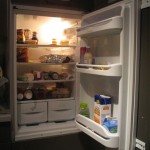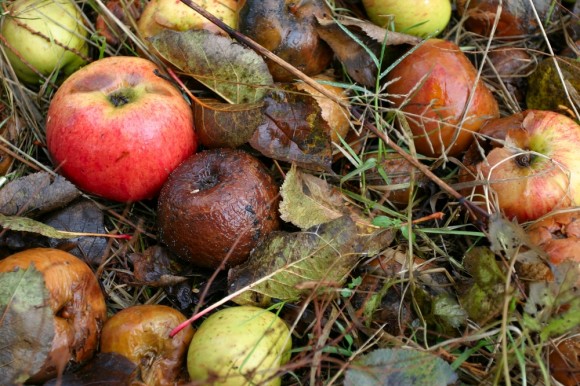The issue of f ood waste is gaining some traction. When I first read some of the statistics on the amount of waste generated by the industrial food system, I was blown away. Imagine: 1.6 million tonnes of food is wasted annually because of supermarket standards that reject produce based on physical characteristics such as size and shape, regardless of taste and nutritional value. If you’ve ever tried to grow food, you know that a funny-looking strawberry is still just as sweet. Consider this: the resources that are used to grow, harvest, process and transport this amount of food that never actually makes it to a human stomach equates to 250 000 billion litres of water, 3.3 billion tons of CO2 emitted, and roughly 1.4 billion hectares of land. Overall, one third of the food we produce is lost! Check out the table from a recent webinar on food waste, illustrating where along the chain the food is being wasted.
ood waste is gaining some traction. When I first read some of the statistics on the amount of waste generated by the industrial food system, I was blown away. Imagine: 1.6 million tonnes of food is wasted annually because of supermarket standards that reject produce based on physical characteristics such as size and shape, regardless of taste and nutritional value. If you’ve ever tried to grow food, you know that a funny-looking strawberry is still just as sweet. Consider this: the resources that are used to grow, harvest, process and transport this amount of food that never actually makes it to a human stomach equates to 250 000 billion litres of water, 3.3 billion tons of CO2 emitted, and roughly 1.4 billion hectares of land. Overall, one third of the food we produce is lost! Check out the table from a recent webinar on food waste, illustrating where along the chain the food is being wasted.
| Sector of the Food Chain | % of edible food wasted |
| Agricultural | 32% |
| Harvest and Storage | 11% |
| Distribution | 13% |
| Households, consumers | 22% |
A recent report states that in our own homes we are wasting 30-50% of the food we buy. Bad habits such as poor meal planning and purchasing excess amounts of perishables based on promotion and sales from grocers leads to a lot of wasted food. To put that into perspective; if your family budgets roughly $200 every week for groceries, 30% is $60 worth of food headed for the garbage! $120 every two weeks, $2880 per year. Ouch, that’s a tough pill to swallow.
GOOD THINGS ARE HAPPENING…..
France has jumped to the plate and recently passed a bylaw against suppliers discarding edible food. Also, check out the youtube video below highlighting how we can get involved in reducing food waste. Remember that even as one person you can do something. There are ways that you can get involved in trying to make change and even by becoming aware and sharing your thoughts with others, this is how we change. Check out this blog for more tips.
As word gets out about these stats and people start to take note of what’s going on, awareness campaigns are born and social media gives them life. Check out Food too Go od to Waste from the EPA. Or Just Eat It, a recent documentary about two BC residents that try to do something about food waste. One of my favorites is The Ugly Fruit and Veg campaign, drawing attention to the beauty and humour found in funny-looking produce. Turns out that fruit and veggies, just like humans aren’t perfect and sometimes, the quirkier the better. There are also government agencies and researchers from around the world collaborating to develop improved technologies for food preservation, education and awareness through community involvement and management systems for supply chain actors.
od to Waste from the EPA. Or Just Eat It, a recent documentary about two BC residents that try to do something about food waste. One of my favorites is The Ugly Fruit and Veg campaign, drawing attention to the beauty and humour found in funny-looking produce. Turns out that fruit and veggies, just like humans aren’t perfect and sometimes, the quirkier the better. There are also government agencies and researchers from around the world collaborating to develop improved technologies for food preservation, education and awareness through community involvement and management systems for supply chain actors.
WHAT YOU CAN DO
On a practical level, here are a few ideas of little changes you can make in your daily food routine to cut back on your wasted food and be a part of the solution.
MEAL PLANNING: When your grocery shopping, be honest with yourself about what you will be able to accomplish in the kitchen. Think about your work week, what’s going on, your favorite meals and how much you will need. Just because there’s a sale on yogurt if you buy 5, doesn’t mean you HAVE to buy 5 of them.
ORGANIZE YOUR FRIDGE: Keep the most perishables in the front. Check out this link on proper food storage. Berries don’t last long and they are best if eaten in the firs t few days. Keep them in the front.
t few days. Keep them in the front.
There’s also a growing debate about Best Before paranoia. What do those dates really mean anyway and are we being overly cautious? But that’s another story…..




Excellent article / blog entry. It’s unbelievable how many resources go to waste with the food that never makes it to market. I’m definitely going to look at how our household buys and uses its food to do my part. Thanks!!!